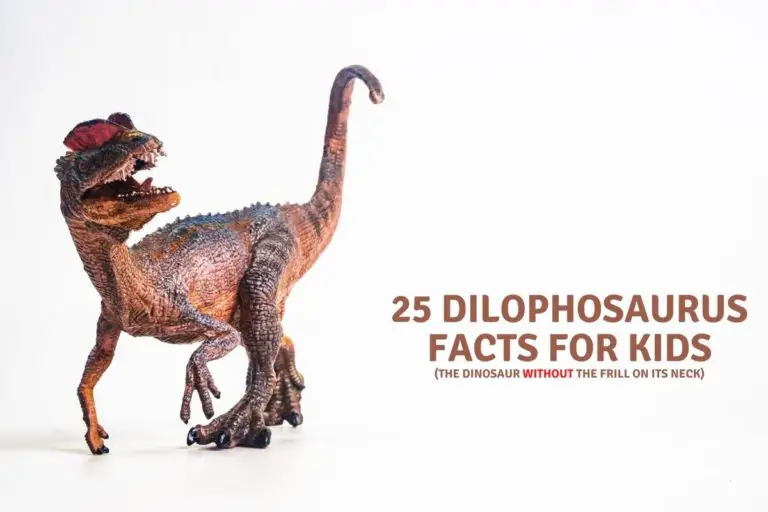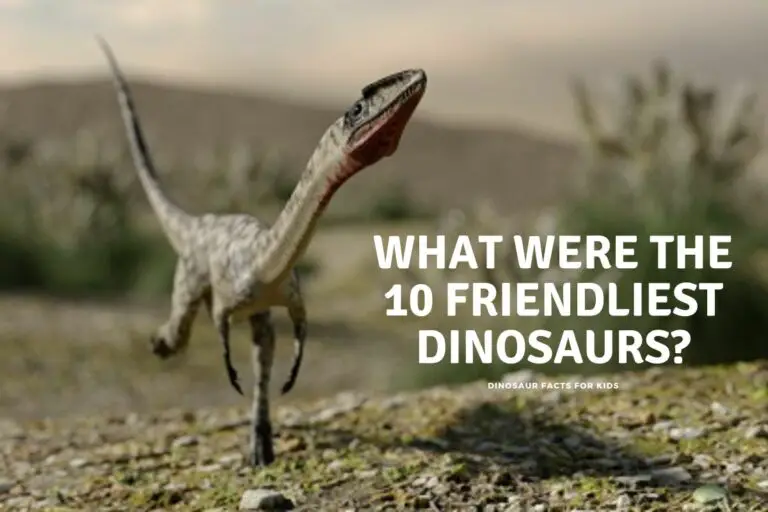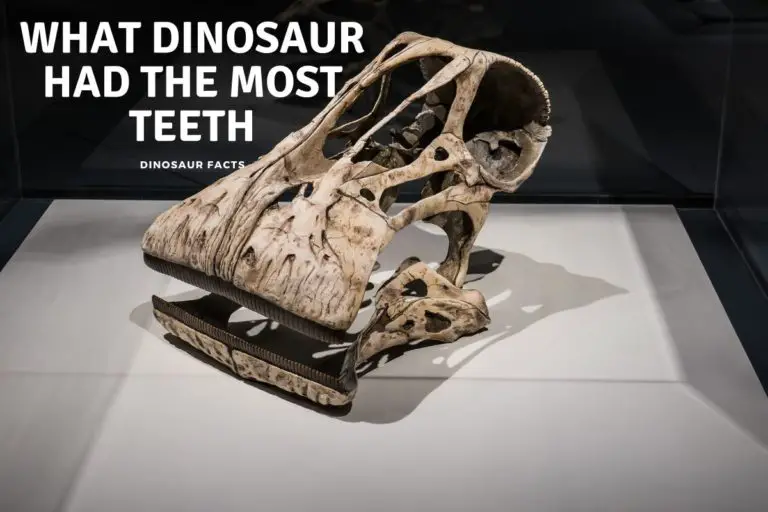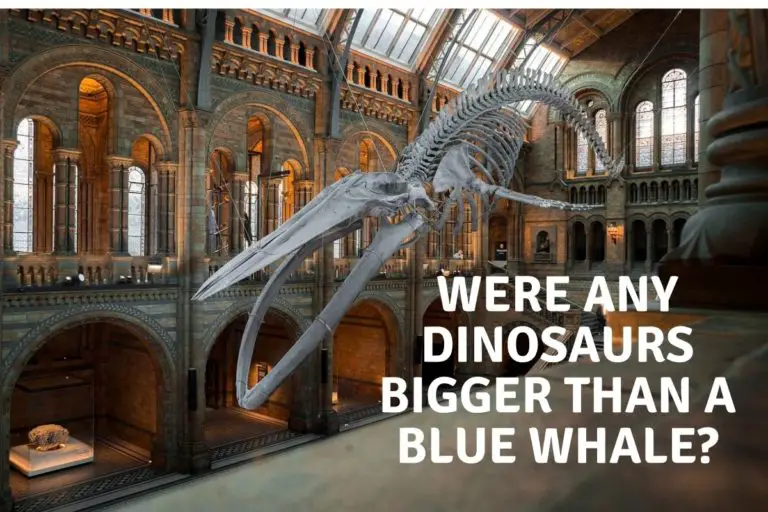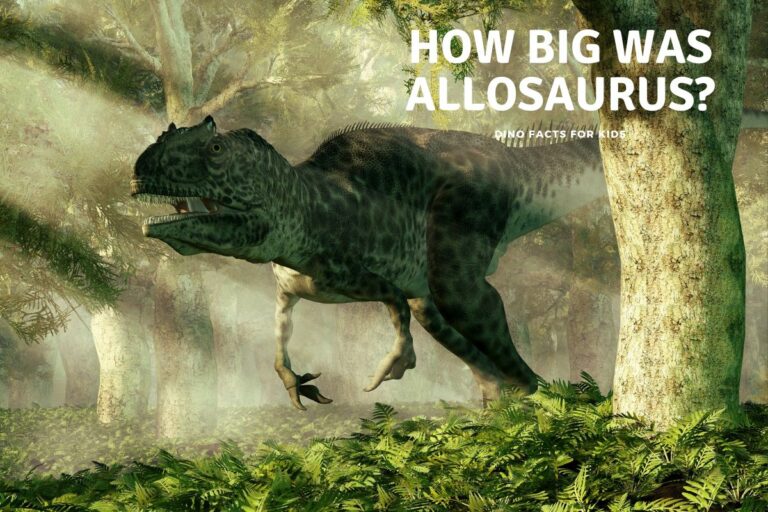Which Dinosaur had the most spikes?
Jaws, claws, horns, and spikes! Dinosaurs must be the most bizarre-looking creatures ever to walk the earth. Although we can’t study them in real-time, fossils can teach us so much about these ancient creatures. We see images and models created from fossilized bones showing some strange-looking features. So which dinosaurs had spikes on their bodies and heads, and what purpose did they serve?
Many dinosaurs boasted spikes and horns on their bodies and heads that they used to fight each other and attract mates. Kosmoceratops topped the list with fifteen spikes. Ceratosaurus had a line of sharp spikes on its carnivorous head, and many herbivores like Triceratops and Dracorex also sported horns.
It wasn’t long ago that scientists began to study dinosaur fossils. Richard Owen coined the term “dinosaur,” meaning “terrible lizard,” in 1842. Since the nineteenth century, paleontologists have found hundreds of different species with body armor and horns. The horns come in many sizes and shapes, and as research progresses, it opens our minds to more ideas about their purposes.
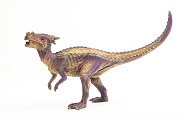
Which Dinosaurs Had Spikes On Their Heads?
The presence of horns on dinosaurs’ heads did not define the creature as herbivores or carnivores. It also did not identify the gender of the creature . There doesn’t appear to be a specific category of dinosaurs with horns and spikes.
Ceratopsian dinosaurs refer to those “horn-faced” dinosaurs comprising over sixty species. Amongst the different species, horns and spikes varied in their positions on the head and the forms they took, like bumps or sharp spines or even curly and decorative.
Dracorex And Stygimoloch Had Spikes
The Hell Creek Formation saw the discovery of three tiny bones of a Stygimoloch, a small herbivore. When placed next to a cast of the Pachycephalosaurus’ skull, the little skull bones seemed to be an exact miniature version of the giant reptile’s skull. Paleontologists realized that Stygimoloch was not a species on its own but a very young Pachycephalosaurus with tiny spikes and horns on its head.
Dracorex also belonged to the Pachycephalosaurus family but did not have the typical dome-shaped head. Instead, it boasted frills and spikes, resembling a mythical dragon. Paleontologists named it Dracorex (meaning dragon king) Hogwartsia, after the fictional school in J.K. Rowling’s Harry Potter fantasy fiction. Some paleontologists believe that Dracorex is a juvenile Stygimoloch.
Ceratopsians The Horn-Faced Dinosaurs
Ceratopsians were a group of herbivorous dinosaurs that inhabited Europe, Asia, and North America in the Cretaceous period. This group was made up of three lineages: Psittocauridae, Protoceratopsidae, and Ceratopsidae. The first two groups had frills on their heads but no horns.
The third group, Ceratopsidae, comprised two lineages, namely Chasmosaurinae and Centrosaurinae. Chasmosaurinae had large eye horns and small ones on the nose. In contrast, Centrosaurinae sported large nose horns and small ones around the eyes.
Triceratops Is The Most Famous Horn-Faced Ceratopsian
Triceratops existed in the final 3 million years of the Cretaceous period, between 145.5 and 65.5 million years ago. It was a massive animal, weighing 12000-16000 lbs and sometimes reaching 30 feet in length. Its giant head could be up to 10 feet long.
Three huge horns protruded from the head, two above the eyes and one on the nose. It also had as many as 26 smaller spikes (epoccipitals) on the sides of the frill at the back of its skull.
Triceratops could have used its horns to fight predators such as Tyrannosaurus
. A fossil collected in 1987 showed a bitten-off horn with teeth marks matching those of a typical Tyrannosaurus. Puncture marks on some fossilized frills indicate that Triceratops probably also fought each other to impress the females.Pentaceratops Was A Peace-Loving Horned Ceratopsian
Its name indicates that it had five spikes on its head, but as a close relative of Triceratops, only three can be considered horns. Two sat above the eyes, and one grew at the end of the snout. The other two were more like growths that developed from the cheekbones.
Pentaceratops was a peaceful herbivore with one of the biggest heads of any dinosaurs that ever existed. It also had a massive, ornate frill that probably impressed the females of the species. The males likely butted each other with their horns when competing for mates.
Nasutoceratops Spikes Reminiscent Of A Steer
Nasutoceratops was a herbivorous ceratopsian with horns like a bull’s and a large, rounded nose. Its name means “large-nosed horn face.” It lived in the Utah area approximately 75 million years ago. It looked like a mix between a Triceratops and a steer. The horns were likely visible signs of dominance, and if the enemy wasn’t scared off, they probably used them as weapons.
The Dinosaur With The Spiked Shield
In 2005 Bill Shipp found a fossil on his land in Montana that led to the discovery of a new species of dinosaur, Spiclypeus shipporum. This strange-looking animal had an enormous head frill with spikes on it, making it look like it had a spiked shield on its head.
While some horns curled forward, others stuck straight out, leading scientists to believe that S. shipporum could have been a transition species that connected some primitive dinosaurs with outward projecting horns to other species with spikes curling forward.
Kosmoceratops Was The Dinosaur With the Most Horns
Scott Richardson found the first fossil belonging to Kosmoceratops in 2006 in the Grand Staircase Escalante National Monument. Paleontologists gave it the full name of Kosmoceratops richardsoni. Kosmoceratops was the most horned dinosaur in the literal sense, having fifteen horns on its head.
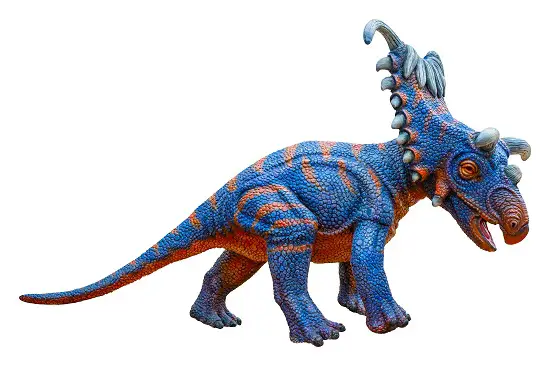
Ten horns adorned Kosmoceratops’ frill, which curled forwards like bangs. One horn sat above each eye, and another horn projected from the end of its nose. It also had one sprouting from each cheekbone.
Paleontologists don’t think that the primary function of all these horns and spikes was defense. Instead, they believe that they used them to attract mates.
Huge Neck Frills On Styrocasaurus Studded With Spikes
The Styrocasaurus was another Ceratopsian that had a massive frill on its neck. It had between four and six horns jutting out from the frill, a two-foot spike on its nose, and smaller ones projecting from its cheeks.
What About Carnivorous Dinosaurs With Head Spikes?
The Ceratosaurus was a meat-eater with a row of sharp spikes running along the top of its head and bony body armor down its back. Ceratosaurus was a ferocious hunter and probably ate its herbivorous relatives. The horns and armor could have protected it against some of the larger dinosaurs, such as Allosaurus or Torvosaurus.
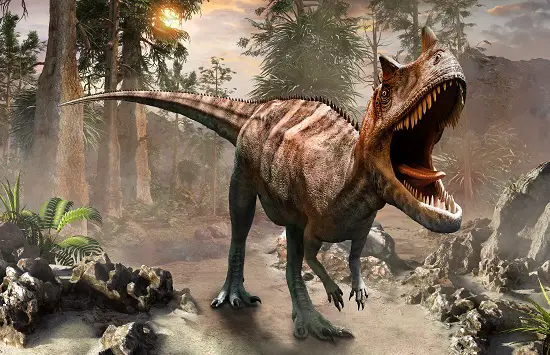
Carnotaurus was another carnivore that boasted two short horns above its eyes. These may have been used for choosing a mate and ramming other males when fighting for their females. The horns also possibly distributed the force of blows received during a fight, thus protecting the brain.
Conclusion
Many herbivorous dinosaurs had horns or spikes on their head. While some of their carnivorous cousins shared the same feature, this seemed like a rarer characteristic of the meat-eaters.
Most dinosaurs with horns and spikes on their heads used them to defend themselves against predators, signal dominance to other males, and impress the opposite sex before mating. While these prehistoric reptiles might look strange and even awkward to us, the female dinosaurs probably thought they were awfully attractive with their horns and spikes.
References
- https://www.nhm.ac.uk/discover/dino-directory/dracorex.html
- https://www.nationalgeographic.com/science/article/paleontologists-uncover-the-tiniest-bonehead
- https://www.newscientist.com/article/dn19490-meet-kosmoceratops-the-horn-vegetarian-dinosaur/
- https://www.nhm.ac.uk/discover/dino-directory/ceratosaurus.html
- https://www.theguardian.com/science/lost-worlds/2013/jul/26/dinosaurs-fossils
- https://www.guinnessworldrecords.com/world-records/93291-longest-dinosaur-horns#:~:text=The%20longest%20horns%20of%20any,m%20(4%20ft)%20long.
Hi, I am Roy Ford a General Studies and English Teacher who has taught all over the world. What started as a fossil collection became a great way to teach, motivate and inspire students of all ages and all over the world about dinosaurs and from that and children’s love of dinosaurs came the site dinosaur facts for kids, a resource for all ages.


